| Corcoran Technical Trading Patterns For October 16 |
| By Clive Corcoran |
Published
10/16/2008
|
Stocks
|
Unrated
|
|
|
|
Corcoran Technical Trading Patterns For October 16
The low volume during Monday's upward surge was one warning that there was less conviction behind the sharp rally than one would have expected if traders were convinced that the worst of the crisis was behind us. The onslaught of dire economic data as well as lingering doubts that the banking crisis has been solved has lead to another global sell-off.
Weakness in Europe had already set the tone by the time that trading began in New York and the release of a sharp decline in retail sales, pointing to the uncomfortable fact that no matter how many efforts are made to make credit more available, there is growing evidence that US consumers have either maxed out their credit lines or are losing their appetite for debt as they prepare for much harder times.
The S&P 500 endured one of its worst sessions, and today attention will be focused on whether the lows from last Friday can hold. Last week I suggested that the 2002/3 lows nearer to 800 will have to be tested before this contagion could be said to have passed and I am still of that view.
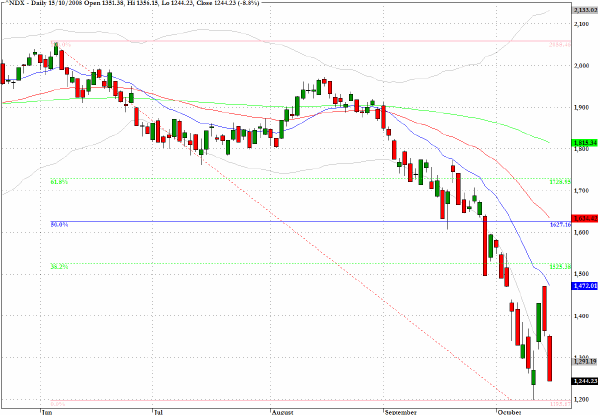
The Nasdaq 100 (^NDX) closed just above last Friday's close but once again attention will focus on whether last Friday's low can hold.
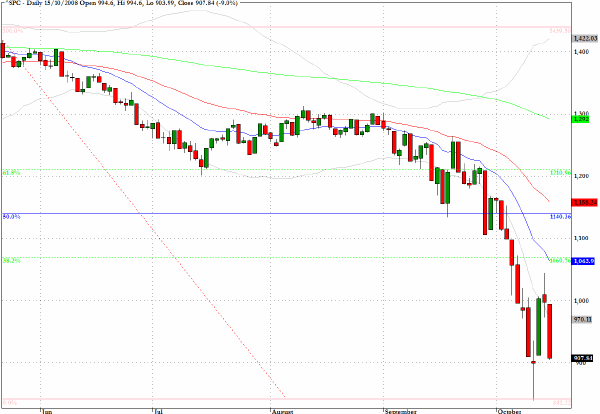
The Nikkei 225 (^N225) closed Thursday's trading with its second largest percentage plunge ever. Tuesday's 14% gain was more or less erased with an 11.5% decline and once again raises the prospect that the 2003 low around 7800 may need to be robustly tested.
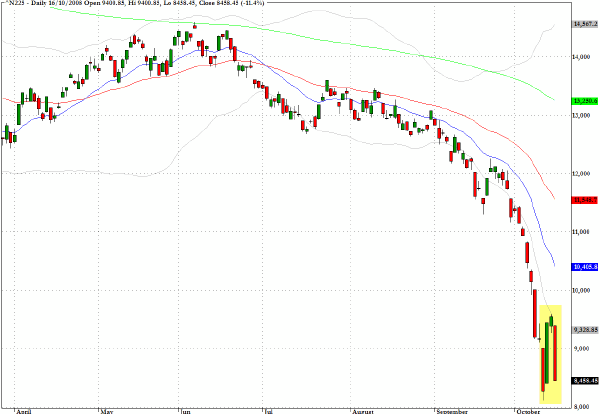
Stocks in London plunged on the open this morning and as the chart reveals the intraday low registered so far was below that seen in Friday's vicious sell-off. As this is being written there is some stabilization, but until the US markets have opened later today it is very hard to see the current market as groping for a bottom.
Unsettling the financial markets in the UK is some discomfort that the Lloyds-HBOS deal could be less solid than previously announced, with further fall out over the UK Treasury's condition that Lloyds not be allowed to pay dividends until the taxpayer's preferred shares are retired.
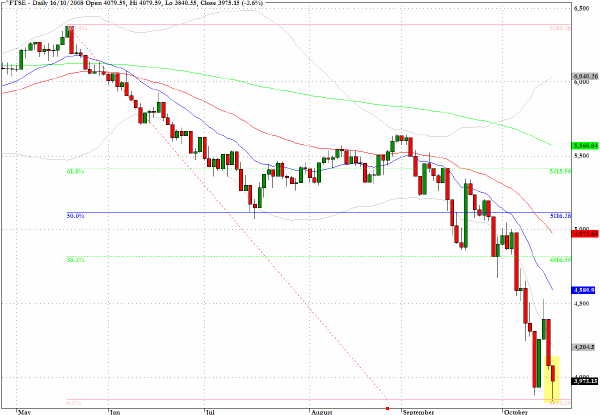
RWR, representing major REIT's and cited here yesterday, was one of many sector funds to return double digit returns on the short side yesterday. The Ultra Shorts registered some spectacular gains yesterday, and in several cases the drops significantly exceeded the two times inverse leverage of the underlying indices.
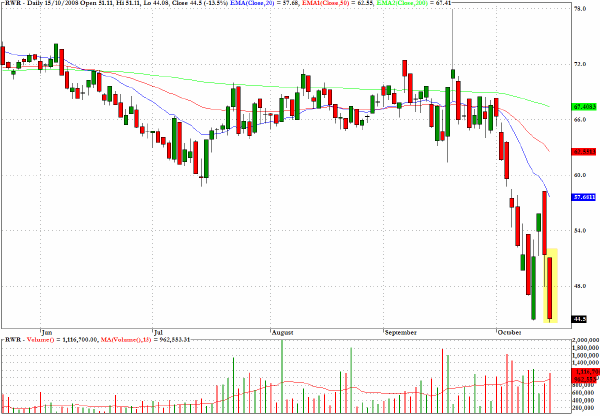
Price action in many industrial stocks, including Alcoa (AA), is pointing to the fact that the 2002/3 lows may not hold.
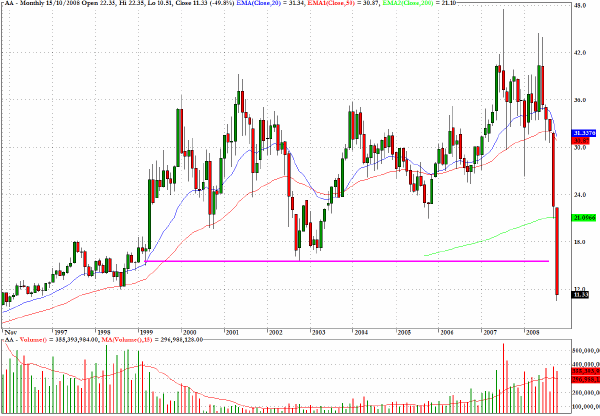
The monthly chart for International Paper (IP), another Dow component, is further evidence that recessionary forces are far more severe than those seen during the fallout from the bursting of the Nasdaq bubble just after the turn of the millennium.
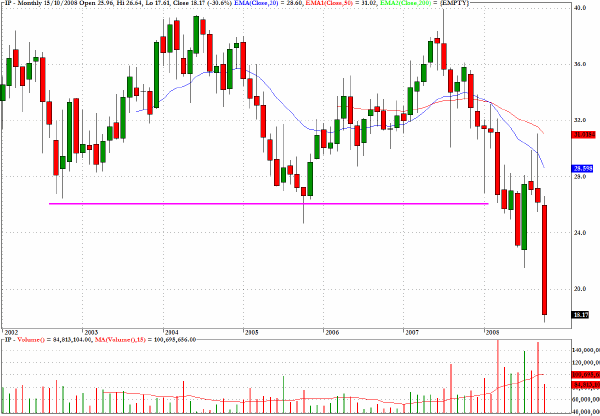
The chart for XLY is worth monitoring in the next few sessions for evidence as to whether the markets can stabilize in the vicinity of the lows seen during 2002.
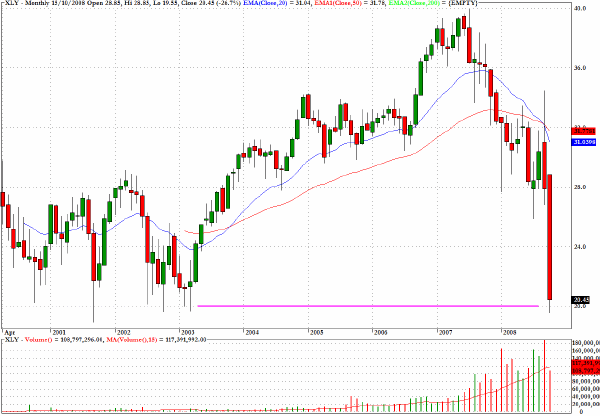
The monthly chart for XLB, a sector fund for industrial materials, shows that this sector is in free fall and also has further capacity on the downside before critical testing levels are attained.
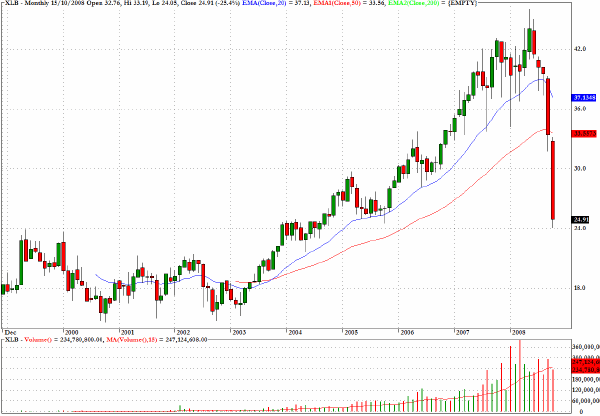
Clive Corcoran is the publisher of TradeWithForm.com, which provides daily analysis and commentary on the US stock market. He specializes in market neutral investing and and is currently working on a book about the benefits of trading with long/short strategies, which is scheduled for publication later this year.
Disclaimer
The purpose of this article is to offer you the chance to review the trading methodology, risk reduction strategies and portfolio construction techniques described at tradewithform.com. There is no guarantee that the trading strategies advocated will be profitable. Moreover, there is a risk that following these strategies will lead to loss of capital. Past results are no guarantee of future results. Trading stocks and CFD's can yield large rewards, but also has large potential risks. Trading with leverage can be especially risky. You should be fully aware of the risks of trading in the capital markets. You are strongly advised not to trade with capital.
|